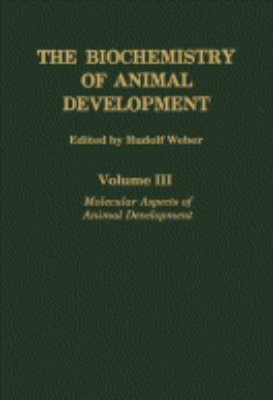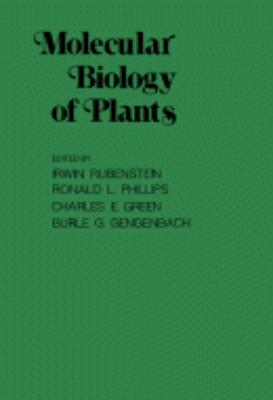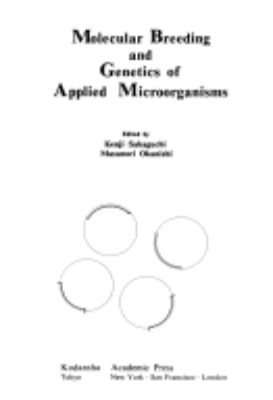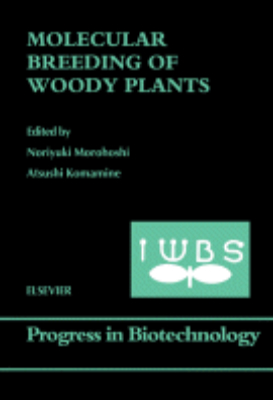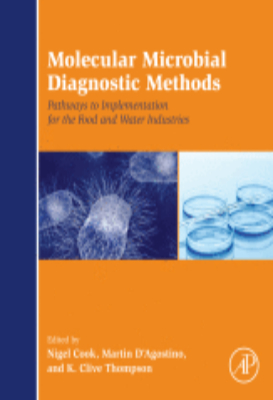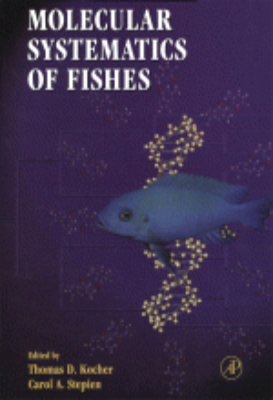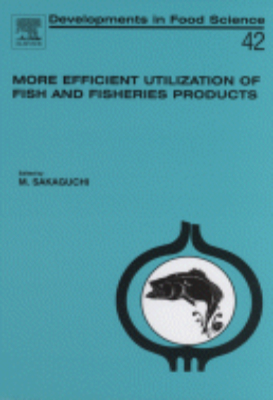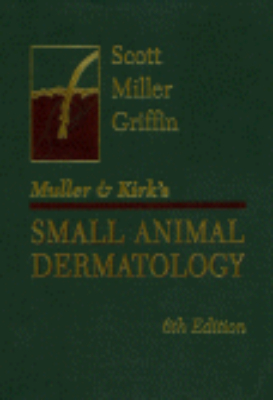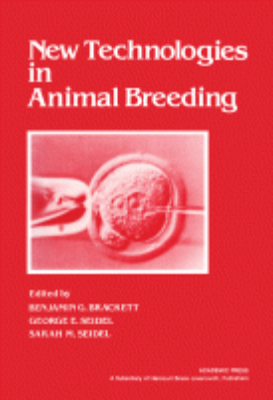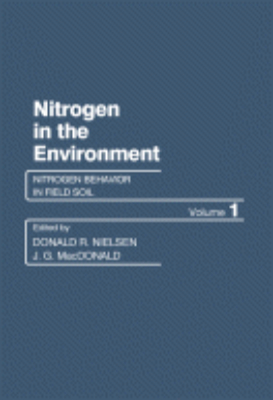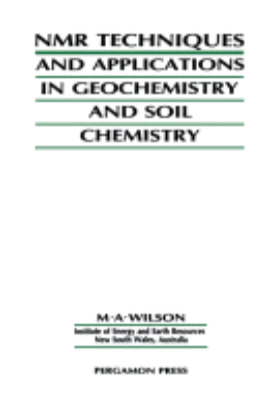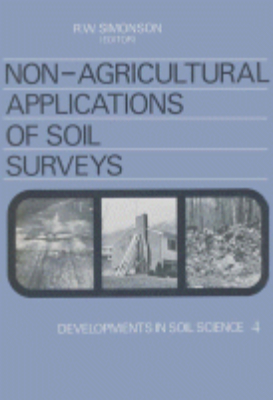ebooks
Molecular Aspects of Animal Development
The Biochemistry of Animal Development, Volume III: Molecular Aspects of Animal Development provides an account of the developments in the molecular approach to vertebrate development with particular emphasis on the functions of nucleic acids. The book discusses topics on oocyte maturation, transcriptional patterns in early development, the post-transcriptional control of gene expression, and the significance of gene amplification. Morphogenetic substances, growth-promoting proteins, and the functional differentiation of mitochondria in embryonic systems are covered as well. Biochemists, biologists, and zoologists will find the book invaluable.
Molecular Biology of Plant Nuclear Genes
Cell Culture and Somatic Cell Genetics of Plants, Volume 6: Molecular Biology of Plant Nuclear Genes focuses on the spectacular and rapid advances in the molecular biology and genetics of plants. This book consists of 19 chapters. Chapters 1 to 5 describe the most commonly used approaches for the genetic transformation of plants. The light-inducible and tissue-organ-specific genes are discussed in Chapters 6 to 11. In Chapters 12 to 14, the genes regulating phytohormone synthesis, heat shock proteins, and nodulation in legume roots are treated, while in Chapters 15 to 16, the relationship between chromatin structure and gene expression and molecular biology of plant RNA viruses are analyzed. The development of transgenic plants resistant to viruses, insects, and herbicides is dealt with in the last three chapters. This volume is suitable for plant molecular biologist, genetic engineers, and researchers concerned with plant cell and tissue culture.
Molecular Biology of Plant Tumors
Molecular Biology of Plant Tumors provides an opportunity to learn in detail about the latest insights into the mechanism of transformation of plant cells by Agrobacterium tumefaciens. The study of the molecular mechanism responsible for the crown gall phenomenon (induced by Agrobacterium tumefaciens) illustrates the point that the fundamental study of the cause(s) and mechanism(s) of abnormal growth might be one of the most efficient ways to understand cellular differentiation and the molecular basis of gene expression. The book is organized into three parts that contain research on abnormal plant growth, crown gall tumors, and potential vectors for genetic engineering in agriculture. The genetic structure responsible for the neoplasmic transformation of plant cells in crown galls is a bacterial plasmid (called Ti for tumor-inducing). Research described in this volume demonstrates that these Ti plasmids were designed by evolution as natural gene vectors with which some bacteria can introduce active genes into plants. These transferred genes are maintained by integration in the plant genome and their expression is directly or indirectly responsible for the tumorous growth pattern.
Molecular Biology of Plants
Molecular Biology of Plants presents the formal scientific presentations delivered on the symposium on plant molecular biology, held at the University of Minnesota in 1976. The topics in this book are organized around the central dogma of molecular biology. Section I describes the organization and replication of DNA in plant chromosomes, including chloroplast genomes; Section II discusses molecular aspects of transcription and translation, ribosomal RNA gene systems and hormonal control of protein synthesis. Section III examines plant viruses and bacterial agents, in particular the crown gall system, viroids, and the replication of plant RNA viruses. Each of these specific topics contributes to an integrated knowledge of plant molecular biology. The book will be of interest to geneticists, cell biologists, plant breeders, plant physiologists, plant pathologists, and biochemists.
Molecular Breeding and Genetics of Applied Microorganisms
Molecular Breeding and Genetics of Applied Microorganisms provides expert reviews on the developments in the field of applied microbiology in Japan. The book presents areas where further progress in applied microbiology is possible. Articles on these possibilities such as the use of recombinant DNA techniques to link fragments of DNA from unrelated organisms; creation of new strains of microorganisms to control pollution; construction of a ""biological battery"" using a photosynthetic system; and breeding of plant species tolerant to various plant diseases are explored in detail. Microbiologists, biologists, geneticists, biochemists, pharmacologists, and researchers will find the book insightful.
Molecular Genetics
Molecular Genetics, Part III: Chromosome Structure explores the structure and modification of DNA, chromatin, and higher order organization and possible subunits of chromosomes at the molecular level. It describes major changes in concepts of chromatin structure and packaging of DNA based on studies of nuclease digests and electron micrographs; the role of restriction endonucleases in molecular genetics; the involvement of DNA topoisomerases in concerted breaking and rejoining of DNA backbone bonds; enzymatic methylation of DNA; and transcriptional units in eukaryotic chromosomes. Organized into seven chapters, this volume begins with an overview of the general properties of type I and type II restriction enzymes, basic aspects of restriction enzyme technology, and applications of restriction enzyme technology to the study of chromosome structure and function. It then discusses recombinant DNA technology; possible biological roles of DNA topoisomerases; recognition and control sequences in nucleic acids; composition and substructure of nucleosomes; analysis of chromosome fibers by electron microscopy; organization of fibers into chromosomes; and functional aspects of organization of chromosome fibers. Molecular biologists, geneticists, scientists, and electron microscopists will find this book extremely helpful.
Molecular Genetics of Sex Determination
In this era of accelerated discovery and prolific output, Molecular Genetics of Sex Determination keeps readers abreast of this fields fast-moving biology. Its chapters were completed by experts in eacharea only months before publication. The text is organized into two parts. First, it reviews the basic biology of sex determination and summarizes ground-breaking work in mouse, marsupial, and Drosophila systems. Second, it covers current human genetics, clinical studies, and the syndromes of abnormal sex differentiation. With chapters by preeminent reproductive biologists, this is a capital work. Ohno's law is described by Ohno; the Lyon hypothesis, by Lyon; Sinclair tells how he cloned the testis-determining gene; and so on. Molecular Genetics of Sex Determination is authoritative, comprehensive, and current. It is prime reading for geneticists, developmental biologists, graduate students in these and related fields, clinical researchers, physicians, and medical students.
Molecular Genetics: 2000
Molecular Genetics, Part II covers the significant developments in various areas of molecular genetics. This book is composed of 10 chapters that also consider the gene expression and regulation of some enzymes. The opening chapters deal with the mechanisms of nucleic acid replication and repair, as well as the structural aspects of the genetic apparatus of viruses and cells. The next chapters explore the patterns and mechanisms of genetic recombination, the in vitro and in vivo experiments to delineate the genetic code, and the initiation of peptide chains in Escherichia coli. These topics are followed by discussions of the mechanism of DNA-dependent RNA synthesis, the regulation of enzyme synthesis in microorganisms, and the regulation of viral replication. The final chapters consider the theoretical and practical aspects of the metabolic regulation in metazoan system and the procedures for the study of DNA-DNA and DNA-RNA interactions. This book will be of great value to molecular geneticists, biochemists, and researchers.
Molecular Microbial Diagnostic Methods
"Molecular Microbial Diagnostic Methods: Pathways to Implementation for the Food and Water Industry was developed by recognized and experienced highlevel scientists. Its a comprehensive and detailed reference that uncovers industry needs for the use of molecular methods by providing a brief history of water and food analysis for the pathogens of concern. It also describes the potential impact of current and cutting-edge molecular methods. This book discusses the advantages of the implementation of molecular methods, describes information on when and how to use specific methods, and presents why one should utilize them for pathogen detection in the routine laboratory. The content is also pertinent for anyone carrying out microbiological analysis at the research level, and for scientists developing methods, as it focuses on the requirements of end-users. Key Features. Includes information on how to introduce and implement molecular methods for routine monitoring in food and water laboratories. Discusses the importance of robust validation of molecular methods as alternatives to existing standard methods to help ensure the production of defendable results. Highlights potential issues with respect to successful implementation of these methods"
Molecular Systematics of Fishes
"Sequenced biological macromolecules have revitalized systematic studies of evolutionary history. Molecular Systematics of Fishes is the first authoritative overview of the theory and application of these sequencing data to fishes. This volume explores the phylogeny of fishes at multiple taxonomic levels, uses methods of analysis of molecular data that apply both within and between fish populations, and employs molecule-based phylogenies to address broader questions of evolution. Targeted readers include ichthyologists, marine scientists, and all students, faculty, and researchers interested in fish evolution and ecology and vertebrate systematics. Key Features. Focuses on the phylogeny and evolutionary biology of fishes. Contains phylogenies of fishes at multiple taxonomic levels. Applies molecule-based phylogenies to broader questions of evolution. Includes methods for critique of analysis of molecular data"
Molecular Wine Microbiology
"Molecular Wine Microbiology features rigorous scientific content written at a level comprehensible for wine professionals as well as advanced students. It includes information on production and spoilage issues, the microbial groups relevant for wine production and microbial wine safety. Microbiology has long been recognized as a key tool in studying wine production, however only recently have wine microbiology studies been addressed at a molecular level, increasing the understanding of how microbiology impacts not only the flavor quality of the wine, but also its safety. Understanding, at a molecular level, how a starter culture can impact ethanol, glycerol, volatile phenols, mannoproteins, biogenic amines or ochratoxin A of a wine are just some of the core points that must be considered in order to achieve maximium consumer acceptability while addressing safety concerns during processing and storage. While other books offer insights into the technological aspects of enology, this book is written by expert microbiologists, who explore the positive and negative impacts of gene function in the production of wine, from a microbiological point of view. Key Features. Winner of the 2012 Jury Award in Enology from the International Organisation of Vine and Wine. Presents the most current methods of studying the microbiology of wine. Includes latest identification and typing methods, reducing identification time from days and weeks to minutes and hours. Provides important knowledge about the impact of microbiological factors at the molecular level for reduction of wine spoilage and increased wine quality and safety"
Muller & Kirk’s Small Animal Dermatology
Fully revised and updated, Muller & Kirk's Small Animal Dermatologyprovides students and veterinarians the most complete, up-to-date and user-friendly textbook of dermatology for dogs, cats, and pocket pets. This popular resource thoroughly details everything concerning etiology, pathogenesis, clinical signs, diagnosis, and therapy. Lavishly illustrated with clinical, microscopic and histopathological materials, it features over 1200 illustrations.
Muscle and Meat Biochemistry
Muscle and Meat Biochemistry teaches the different concepts and topics under the eponymous subject. The book covers the gross and detailed composition and structure of muscles and the relationship of the nervous system with the muscular system; muscle cell differentiation and growth; proteins of the thick filament; and the molecular structure and enzymatic activity of myosin. The text also discusses the proteins found in the thin filament - actin, troponin, and myosin; skeletal muscle growth; protein metabolism; and fiber types. The book also encompasses cardiac and smooth muscle; sarcoplasmic proteins; the connective tissues - collagen, elastin, and ground substance; and the postmortem changes during conversion of muscle to meat. The text is recommended for advanced undergraduate and graduate students, as well as for scientists who would like to know more about muscle biology, muscle physiology, and meat science.
Natural Resource Administration
"Natural Resource and Wildlife Administration presents a clear perspective on natural resource administration in North America, how it developed, how it is currently structured, and where it might be heading. Intertwined areas of natural resources, including wildlife administration, fisheries, forestry, and other competitive land uses, are heavily discussed. The book covers the history of natural resource management in Europe and North America, proceeding to environmental law; agencies involved in wildlife and natural resource management; and the human dimensions of public relations and economic concerns. Natural Resource and Wildlife Administration provides solid background on the history of natural resource conservation, critical laws protecting resources, and the nature of agencies. The interconnectedness among natural resources makes this a useful text for disciplines such as wildlife, fisheries, and forestry. Key Features. Covers the development of natural resource law and the conservation agencies in North America, and also provides models for international use. Examines the roles of diverse federal, state, and non-governmental agencies, and how they cooperate as professionals to accomplish natural resources management. Leads readers to a greater understanding of the politics and interplay of priorities in professional conservation biology. Assists the certification processes of professional societies. Includes end-of-chapter questions for further thought and discussion, as well as offset boxes throughout the text to help explain more technical subjects"
New Technologies in Animal Breeding
New Technologies in Animal Breeding looks at new reproductive technologies in breeding domestic animals, such as sex selection, frozen storage of oocytes and embryos, in vitro fertilization and embryo culture, amphibian nuclear transplantation, parthenogenesis, identical twins and cloning in mammals, and gene transfer in mammalian cells. It summarizes the state-of-the art and offers perspectives on future directions for several animal industries of great importance in food production, including artificial insemination, embryo transfer, poultry breeding, and aquaculture. Organized into five sections encompassing 14 chapters, this book begins with an overview of animals in society and perspectives on animal breeding. It then discusses the animal industries that are heavily dependent on reproductive technology, including those engaged in cloning, selfing, aquaculture, artificial insemination, and embryo transfer. It also explains the developing technologies as well as their potential applications and impacts on animal production, along with special economic considerations, such as the benefits of reproductive management, synchronization of estrus, and artificial insemination of beef cattle and sheep. The final chapter considers biomedical and agricultural research, implementation of new technologies in animal breeding, and research in animal reproduction. This book is an essential reference for scientists and researchers interested in animal science and animal reproduction.
Newer Methods of Nutritional Biochemistry with Applications and Interpretations: Volume 1
Newer Methods of Nutritional Biochemistry: With Applications and Interpretations, Volume I, provides graduate biochemistry students and medical scientists with a compilation of biochemical procedures which have extensive applications in nutrition research. To this end, several approaches to further exploration of protein, carbohydrate, and fat metabolism and the interrelationship with enzymes, vitamins, and minerals are covered in some detail. Comprised of 11 chapters, this book discusses proteins and amino acids; utilization of dietary proteins; intestinal absorption; diet and tissue enzymes; and rates and the kinetics of enzyme formation and destruction in the living animal. It considers vitamins B1, B2, B6, niacin, and ascorbic acid; vitamin B12 and intrinsic factor; carbohydrates; fats, fatty acids, and sterols; minerals; and biostatistical methods for nutritional and metabolic investigations.
Newer Methods of Nutritional Biochemistry with Applications and Interpretations: Volume 3
Newer Methods of Nutritional Biochemistry: With Applications and Interpretations, Volume III, provides a compilation of biochemical procedures which have extensive applications in nutrition research. The focus is on simple procedures to evaluate the utilization of dietary proteins given the pressing problems in emergency feeding of populations in developing countries. Comprised of nine chapters, this book discusses the nutritional and metabolic implications of changes in urinary amino acid levels. It examines the concept, role, and implications of protein reserves in the young and adult subjects. It also describes procedures which have contributed to the development of in vitro methods for the evaluation of protein quality. The book also discusses plant protein resources; lipoprotein transport; chemical assay of adrenocorticosteroids; studies of zinc metabolism; and folates in human nutrition.
Newer Methods of Nutritional Biochemistry with Applications and Interpretations: Volume 4
Newer Methods of Nutritional Biochemistry: With Applications and Interpretations, Volume IV, presents discussions and reviews of principles and procedures of nutritional biochemistry which have been developed for assays of nutritive quality of foods. Comprised of six chapters, this book describes determinations of dietary needs of fats, vitamins, and amino acids which fail to apply the long-known ""Law of Diminishing Returns"" to the experimental data. It examines the correlation of urinary metabolites with dietary conditions from the point of view of the dynamic state of metabolism. The book also discusses analytical methods for determining plasma amino acids and their application to nutritional problems of young children; laboratory methods for evaluating changes in protein quality; optimal nutrition for the aged and basic mechanisms of biological aging; and advances in instrumentation and methodology and their application in resolving biological and nutritional problems.
Newer Methods of Nutritional Biochemistry: Volume 2
Newer Methods of Nutritional Biochemistry: With Applications and Interpretations, Volume II provides information pertinent to nutritional biochemistry, including the development in enzyme concepts and methodology. This book discusses the mechanisms of several inborn errors of metabolisms and explains the methods by which these errors may be detected. Organized into 11 chapters, this volume starts with an overview of the advantages of body compositional data that are useful in evaluating treatment effects associated with physiological or nutritional experiments. This text then delineates the detection of aberrations in the metabolism of tryptophan, which may be induced by pathological stress. Other chapters consider the impact of hormones on the utilization of several nutrients. This book discusses as well the utilization of the essential nutrients, including amino acids, biotin, folic acid, pantothenic acid, and fat-soluble vitamins. The final chapter deals with principles and methods of nutritional needs in humans. Biochemists, graduate students, and investigators in the life sciences will find this book useful.
Newer Methods of Nutritional Biochemistry: Volume 3
Newer Methods of Nutritional Biochemistry: With Applications and Interpretations, Volume III presents the pressing problems in emergency feeding of populations in developing areas of the world with emphasis on the need for simple procedures to assess utilization of dietary proteins. This book reviews the criterion of protein utilization and considers the important components of protein metabolism. Organized into 11 chapters, this volume starts with an overview of the metabolic changes induced by deficiencies of essential nutrients. This text then examines the problems of human protein needs in the light of the food habits of vegetarians. Other chapters explore lipid metabolism in terms of its dynamic mechanisms. This book discusses as well the significance of minerals in the utilization of primary foodstuffs, namely, carbohydrates, proteins, and fats. The final chapter deals with the methodology for studies in human nutrition. This book is a valuable resource for biochemists, graduate students, and clinical researchers.
Newer Methods of Nutritional Biochemistry: Volume 5
Newer Methods of Nutritional Biochemistry: With Applications and Interpretations, Volume V, presents discussions and reviews of procedures that may have a significant impact on the future progress of the science of nutrition. Comprised of seven chapters, this book discusses the nutritional and metabolic aspects of circadian rhythms; the relationship of amino acid requirements in terms of amino acid composition and availability from various food sources; and the characteristics of protein-calorie malnutrition. It also describes methods, biochemical mechanisms, and dietary factors that influence the metabolic conversion of dietary carbohydrates into lipid moieties. The book examines the influence of nutritional factors on ribosomal dynamics and discusses the isolation, physical, and biochemical characteristics of proteinase inhibitors found in soy and lima beans and other edible vegetable seeds. A novel method for determining the biological value of protein foodstuffs is also included. This book will be a valuable resource for graduate students and investigators in nutrition and other life sciences.
Nitrogen Behavior in Field Soil
Nitrogen in the Environment, Volume 1: Nitrogen Behavior in Field Soil is the first of a two-volume treatise based on manuscripts presented at the international conference on ""Nitrogen in the Environment, held at the University of California Conference Center, Lake Arrowhead, in February, 1977. All original manuscripts were revised in accordance with discussions at the conference. The chapters published in these volumes are those revised manuscripts, with provisions in each chapter to preserve the major suggestions for their improvement. These two volumes Nitrogen Behavior in Field Soil and Soil-Plant-Nitrogen Relationships should be of value in bringing into perspective current knowledge on selected aspects of nitrogen in the environment. This book contains 26 chapters and begins with a paper on field trials with isotopically labeled nitrogen fertilizer. Separate chapters follow on topics such as computer simulation modeling for nitrogen in irrigated croplands; spatial variability of nitrogen in soils; application of gaseous-diffusion theory to measure denitrification; and measurement and prediction of anaerobiosis in soils.
NMR Techniques & Applications in Geochemistry & Soil Chemistry
The book provides an in-depth review of the state of the art of NMR spectroscopy as applied to a wide range of geochemical problems. It is intended to assist geochemists and spectroscopists working at the interface between geochemistry and NMR, and almost all areas of organic and inorganic geochemistry where NMR has had an influence are discussed.


